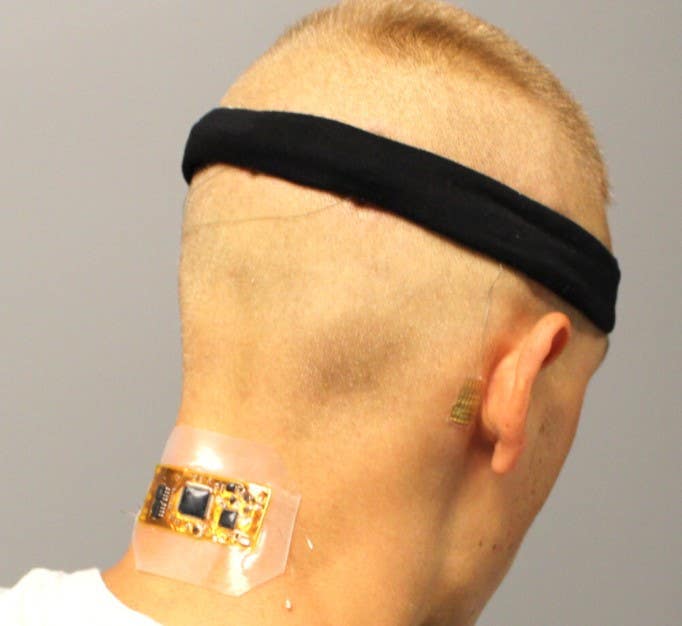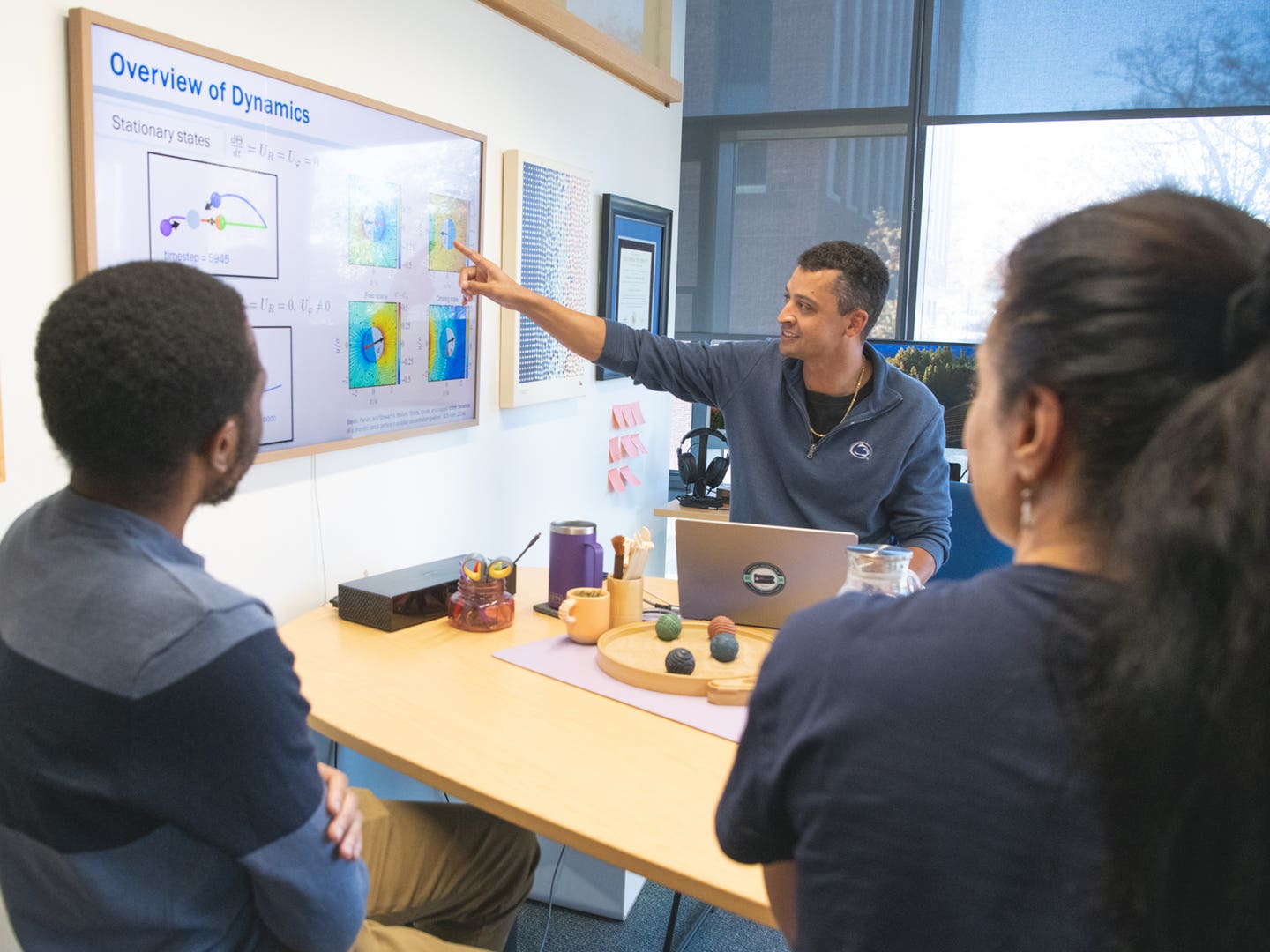Wearable brain-machine interface controls wheelchairs, robotic arms and more
A new wearable brain-machine interface (BMI) system could improve the quality of life for people with motor dysfunction or paralysis

[July 23, 2021: GEORGIA INSTITUTE OF TECHNOLOGY]
Test subject who has flexible wireless electronics conformed to the back of the neck, with dry hair electrodes under a fabric headband and a membrane electrode on the mastoid, connected with thin-film cables. Credit: Woon-Hong Yeo
A new wearable brain-machine interface (BMI) system could improve the quality of life for people with motor dysfunction or paralysis, even those struggling with locked-in syndrome - when a person is fully conscious but unable to move or communicate.
A multi-institutional, international team of researchers led by the lab of Woon-Hong Yeo at the Georgia Institute of Technology combined wireless soft scalp electronics and virtual reality in a BMI system that allows the user to imagine an action and wirelessly control a wheelchair or robotic arm.
The team, which included researchers from the University of Kent (United Kingdom) and Yonsei University (Republic of Korea), describes the new motor imagery-based BMI system this month in the journal Advanced Science.
"The major advantage of this system to the user, compared to what currently exists, is that it is soft and comfortable to wear, and doesn't have any wires," said Yeo, associate professor on the George W. Woodruff School of Mechanical Engineering.
BMI systems are a rehabilitation technology that analyzes a person's brain signals and translates that neural activity into commands, turning intentions into actions. The most common non-invasive method for acquiring those signals is ElectroEncephaloGraphy, EEG, which typically requires a cumbersome electrode skull cap and a tangled web of wires.
These devices generally rely heavily on gels and pastes to help maintain skin contact, require extensive set-up times, are generally inconvenient and uncomfortable to use. The devices also often suffer from poor signal acquisition due to material degradation or motion artifacts - the ancillary "noise" which may be caused by something like teeth grinding or eye blinking. This noise shows up in brain-data and must be filtered out.
An aerosol-jet printed stretchable, skin-like electrode with an open-mesh structure shown in inset. Credit: Woon-Hong Yeo
The portable EEG system Yeo designed, integrating imperceptible microneedle electrodes with soft wireless circuits, offers improved signal acquisition. Accurately measuring those brain signals is critical to determining what actions a user wants to perform, so the team integrated a powerful machine learning algorithm and virtual reality component to address that challenge.
The new system was tested with four human subjects, but hasn't been studied with disabled individuals yet.
"This is just a first demonstration, but we're thrilled with what we have seen," noted Yeo, Director of Georgia Tech's Center for Human-Centric Interfaces and Engineering under the Institute for Electronics and Nanotechnology, and a member of the Petit Institute for Bioengineering and Bioscience.
New Paradigm
Yeo's team originally introduced soft, wearable EEG brain-machine interface in a 2019 study published in the Nature Machine Intelligence. The lead author of that work, Musa Mahmood, was also the lead author of the team's new research paper.
"This new brain-machine interface uses an entirely different paradigm, involving imagined motor actions, such as grasping with either hand, which frees the subject from having to look at too much stimuli," said Mahmood, a Ph. D. student in Yeo's lab.
In the 2021 study, users demonstrated accurate control of virtual reality exercises using their thoughts - their motor imagery. The visual cues enhance the process for both the user and the researchers gathering information.
"The virtual prompts have proven to be very helpful," Yeo said. "They speed up and improve user engagement and accuracy. And we were able to record continuous, high-quality motor imagery activity."
According to Mahmood, future work on the system will focus on optimizing electrode placement and more advanced integration of stimulus-based EEG, using what they've learned from the last two studies.
Citation: Musa Mahmood, et al., "Wireless Soft Scalp Electronics and Virtual Reality System for Motor Imagery-based Brain-Machine Interfaces." (Advanced Science, July 2021)
Like these kind of feel good stories? Get the Brighter Side of News' newsletter.
Tags: #New_Innovations, #Brain, #Wireless, #Controller, #The_Brighter_Side_of_News
Joseph Shavit
Head Science News Writer | Communicating Innovation & Discovery
Based in Los Angeles, Joseph Shavit is an accomplished science journalist, head science news writer and co-founder at The Brighter Side of News, where he translates cutting-edge discoveries into compelling stories for a broad audience. With a strong background spanning science, business, product management, media leadership, and entrepreneurship, Joseph brings a unique perspective to science communication. His expertise allows him to uncover the intersection of technological advancements and market potential, shedding light on how groundbreaking research evolves into transformative products and industries.



